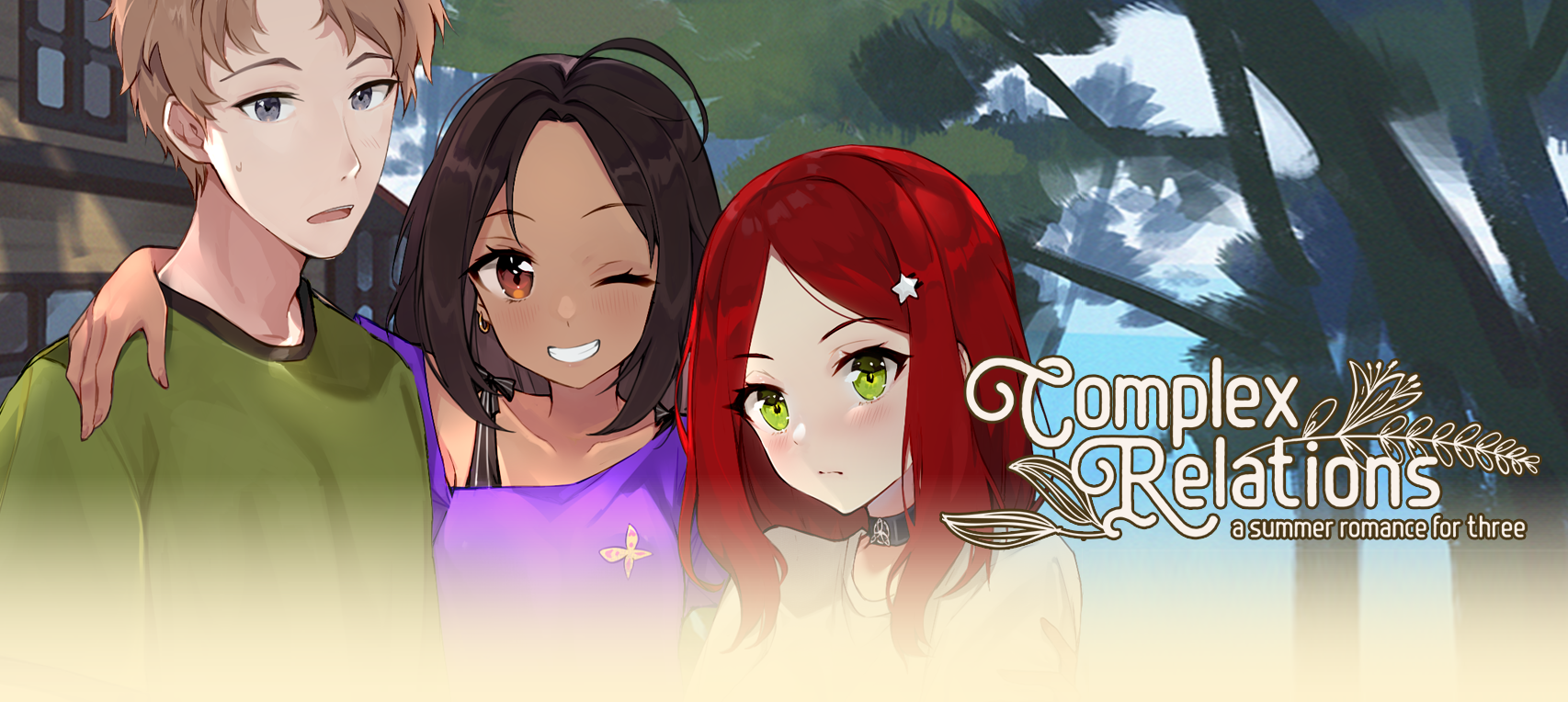Sprite Dynamics
This really isn’t a subject I can claim to be an expert on (Complex Relations is my first visual novel.) But, I’m trying to develop expertise in this as I go, so hopefully you can look forward to improvements on this front for the full game. Meanwhile, I’ll share some of my thoughts on what exactly I’m trying to get right.
So, why exactly do sprite mechanics matter for a visual novel? One way of looking at it is that sprite art is the means by which a VN illustrates characters’ emotions and behaviors as depicted in the text. If a VN has poor use of sprite art, it’s badly conveying the visual side of its scenes.
I disagree with this interpretation.
Sprite
mechanics aren’t just illustrations of a written scene. VNs are a
visual medium (it’s right there in the name!) The visuals aren’t
an add-on to an otherwise complete experience, they’re an essential
channel of information the
game uses to communicate with the audience.
In
a book, everything the audience needs to know about a scene is
supposed to be conveyed in the text, and
anything in the text that the audience doesn’t need to know drags
on the pacing. A writer can’t afford to describe characters’
facial expressions to the audience at every point in every
conversation. That
means that if a character is, say, a double-agent hiding their real
agenda from the other characters, the writer can’t use their facial
expressions as a clue to the audience, unless they can come up with
an excuse to describe their expressions to the audience without
making it obvious what they’re doing.
In a visual medium though, the writer can use cues like expressions and body language to convey things which aren’t in the text. The visuals can reinforce the text, but they can also change its meaning.
In order to do this properly though, the sprite mechanics need nuance. If each character has a handful of expressions for different emotions which are all so obvious that each one can only mean one thing, it’s almost impossible to use them to convey any new information. The sprite dynamics become a game of paint-by-numbers, matching the happy expression to the happy line, the angry expression to the angry line, etc.
Without nuance, sprite work also risks becoming unnaturally static. If a character has one pose and expression for a “happy” mood, and they’re stuck in it until someone makes them angry, they’ll just end up seeming like a cardboard cutout. Good sprite work should help sell the dynamics of a conversation. If the characters stand around like a bunch of mannequins, that can take the audience out of the scene, maybe even worse than if the sprites weren’t there at all.
It’s a lot to manage, but I’ll be trying my best. You can expect more variety of sprite work in the full game. Plus, I dunno, maybe Alexa in a nightshirt or something.
Get Complex Relations
Complex Relations
A hot summer romance for three
| Status | In development |
| Author | Amai Works |
| Genre | Visual Novel |
| Tags | 2D, Anime, Coming Of Age, Erotic, relationship, Ren'Py, Romance |
| Languages | English |
More posts
- Complex Relations updated demo releaseApr 16, 2025
- Complex Relations currently live on Kickstarter!Dec 24, 2021
- Kickstarter Launch Date SetDec 15, 2021
- Variable sex scenesOct 02, 2021
- Back on track for launchSep 26, 2021
- Delay to Kickstarter LaunchJun 01, 2021
- Moving towards KS launchMay 10, 2021
- Writing SexMay 02, 2021
- Update: KS video now in developmentApr 15, 2021

Comments
Log in with itch.io to leave a comment.
I was really impressed by the granularity and level of detail in the demo sprites. It looked like you could independently change different facial features. Is that a custom system you made, or are most devs just not using Renpy's full feature set?
The latter. Complex Relations uses layered images for the sprites, which makes it possible to compose sprites out of a collection of options for each feature and not have millions of full sprite images in the database. That's part of Ren'Py's basic feature set, but it's enough legwork to set up that it's no wonder that a lot of devs don't bother to use it.